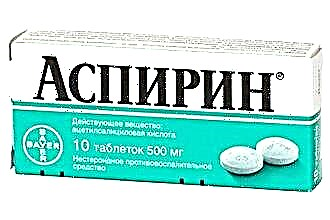Instructions for use
 The action of the drug is manifested due to the blocking of Ca-channels. As a result, the flow of calcium ions into cardiomyocytes and smooth muscle cells of the arteries decreases. This leads to vasodilation and a decrease in total peripheral resistance. As a result, blood flow to the heart improves and afterload decreases, anginal pain disappears, blood pressure drops, and spasmodic smooth muscles relax. The current concentration of nifedipine is maintained for 12-24 hours.
The action of the drug is manifested due to the blocking of Ca-channels. As a result, the flow of calcium ions into cardiomyocytes and smooth muscle cells of the arteries decreases. This leads to vasodilation and a decrease in total peripheral resistance. As a result, blood flow to the heart improves and afterload decreases, anginal pain disappears, blood pressure drops, and spasmodic smooth muscles relax. The current concentration of nifedipine is maintained for 12-24 hours.
Indications: what does the medicine help from?
Cordaflex is used for the following diseases:
- arterial hypertension;
- hypertensive crises
- ischemic heart disease (to prevent attacks, including unstable Prinzmetal angina);
- prevention of migraine attacks;
- colic of various origins and other conditions requiring antispasmodic action
- Raynaud's disease.
What pressure can you take?
If blood pressure exceeds 139/90, the condition can be regarded as hypertension. Pathology leads to numerous complications, including heart attack and stroke. Patients with high blood pressure should control it and keep it within the normal range, or within the limits established by the doctor.
Therefore, Cordaflex is taken for long-term maintenance of blood pressure within the normal range, as soon as the diagnosis of hypertension is made.
Composition and release forms
The active ingredient in Cordaflex is nifedipine, a derivative of 1,4 dihydropyridine.
The medication is produced in two forms:
- coated tablets, 10 mg, yellow, 100 units in a glass jar;
- prolonged-release tablets (long-acting) - also coated, purple, contain 20 mg of active substance. Packed in 30 or 60 pcs. in a bottle
Available in pharmacies with a prescription.
Contraindications and side effects
Nifedipine has a number of side effects from various organ systems. Most often, they appear due to a dosage violation or joint use with other medicines. To avoid unpleasant consequences, be sure to consult with your doctor before taking.
| Organ system | Adverse Reactions |
|---|---|
| Cardiovascular | Redness of the face, a significant decrease in blood pressure (up to collapse), angina pectoris pain. Although the drug has practically no effect on the heart rate, nevertheless, in some cases, it can cause tachycardia (rapid heart rate). |
| Central and peripheral nervous systems | Cephalalgia (headache), fatigue, sleep disorders, with prolonged use of high doses, sensitivity disorders and tremors in the hands are possible. |
| Gastrointestinal tract | Dyspeptic disorders (heartburn, nausea, vomiting, stool disorders), in rare cases - cholestasis, increased levels of liver enzymes (ALT, AST). |
| Blood system | Decrease in the level of platelets, leukocytes, erythrocytes. Occasionally - hemorrhagic syndrome. |
| Excretory | Polyuria (the volume of urination is more than 2 liters), impaired renal function. |
| Musculoskeletal | Pain in muscles, joints |
| Endocrine | Very rare - gynecomastia, increased blood sugar |
| Other | Allergic hypersensitivity reactions, hyperhidrosis (excessive sweating), fever. |
The drug is not recommended for use in the following cases:
- unstable angina;
- myocardial infarction;
- cardiogenic shock;
- arterial hypotension;
- vegetative dystonia of the hypotonic type;
- lactose intolerance;
- individual hypersensitivity to nifedipine, other derivatives of 1,4-dihydropyridine, auxiliary ingredients of tablets.
The medicine is prescribed with caution in the following situations:
- the first month after myocardial infarction;
- pronounced valvular defects;
- hypertrophic myocardiopathy;
- chronic cardiovascular failure;
- acute circulatory disorders of the brain (strokes, transient ischemic attacks);
- acute / chronic liver or kidney failure;
- diabetes.
The safety of using nifedipine in children under 18 years of age has not been established, so it is better to refrain from taking it at this age. Also, the drug is prescribed with caution to the elderly, especially with concomitant kidney pathologies.
During pregnancy, medication may be indicated in the absence of other safer alternatives. However, it is better to refuse to take it while breastfeeding.
The drug does not affect concentration and coordination of movements, therefore, driving and working with complex mechanisms are allowed during its administration. However, at first after the appointment, dizziness attacks are possible - during this period it is better to abandon the above activities. In the future, this issue should be discussed with your doctor.
It is not recommended to drink alcohol during the course of treatment with nifedipine, as this can cause an uncontrolled drop in blood pressure.
How to take: method of administration and dosage
The instructions for use of Cordaflex contain the following recommendations:
- The exact dosage is determined by the attending physician. This takes into account the severity of the disease, the patient's response to treatment, age, the presence of concomitant pathologies and other factors.
- The tablets must be taken before meals (the prolonged form is taken at any convenient time).
- If you miss an appointment, you need to take the medication as soon as possible, but the dosage is not doubled.
- The medicine should be washed down with plain boiled water and swallowed without chewing.
- When symptoms of a hypertensive crisis appear, to accelerate the effect, the drug should be chewed, held in the mouth for a while, and only then swallowed.
The average therapeutic dose is 10 mg three times a day, if necessary, change it in the right direction. A maximum of 40 mg of nifedipine can be taken during the day. The interval between single doses should be at least 2 hours.
Prolonged Cordaflex is used twice a day, with an interval of 12 hours, if necessary, the daily dosage is increased to 80-120 mg (4-6 tablets). In patients with renal dysfunction, it should not exceed 40 mg.
For the elderly, as well as for maintenance therapy, the initial dose is reduced by half, with subsequent adjustment depending on the response to treatment.
Overdose
If the dosage is exceeded, the following symptoms occur:
- drop in blood pressure (up to collapse);
- syncope (syncope)
- vegetative disorders (headache, nausea, vomiting, dizziness)
- angina chest pain.
There is no specific antidote to this drug. Treatment consists in discontinuation of the medication, gastric lavage, and intake of absorbent agents. Symptomatic therapy is also recommended: hypertensive drugs (Norepinephrim, Dopamine), cardiotonics, antiarrhythmics.
Interaction with other drugs
An increase in the hypotonic effect is possible when combined with the following drugs:
- beta blockers;
- tricyclic antidepressants;
- blockers of histamine H2-receptors;
- diuretics;
- ACE inhibitors.
The effect of Cordaflex is weakened by taking calcium supplements
It is not recommended to use Cordaflex together with grapefruit juice due to the effect of the product on the metabolism of nifedipine.
The drug increases the toxicity of Digoxin and Theophylline and anti-inflammatory drugs, as well as indirect anticoagulants.
Special instructions
After MI, nifedipine is prescribed only if hemodynamics are normalized.
In patients with heart failure, it is first necessary to undergo a course of therapy with cardiac glycosides, until the condition is stabilized.
In diabetics, the drug can cause hyperglycemia.
Before undergoing general anesthesia, you must warn your doctor about taking Cordaflex.
Analogs: what can replace the medication?
Substitutes are drugs that contain the same active substance (Nifedipine). They are also called generics. There are the following analogs of Cordaflex on the market:
- Adalat;
- Calcigard;
- Kordafen;
- Cordipin;
- Nifedicap;
- Zanifed;
- Depin-E;
- Phenigidin.
Conclusions
Cordaflex is a highly effective antianginal and antihypertensive agent from the group of calcium channel blockers. Due to this, as well as its low cost, it has become widespread in the treatment of acute attacks of cardiovascular diseases.
Nevertheless, it has a number of contraindications, and can also cause various side reactions. The most common is a sharp drop in blood pressure. To avoid them, you must strictly adhere to dosages and recommendations for use.



